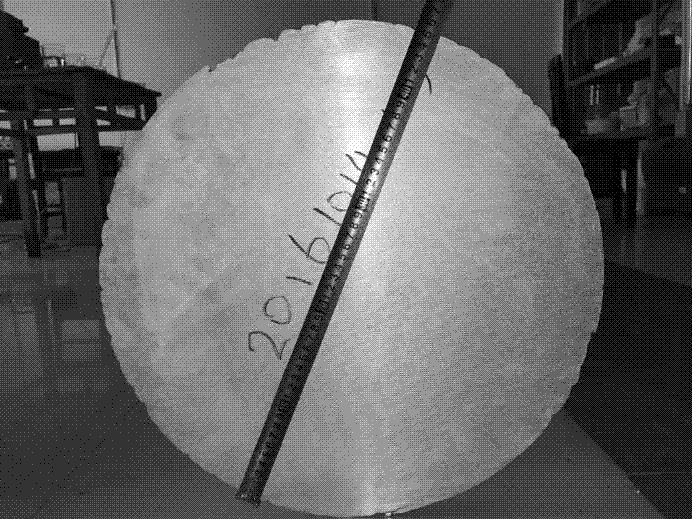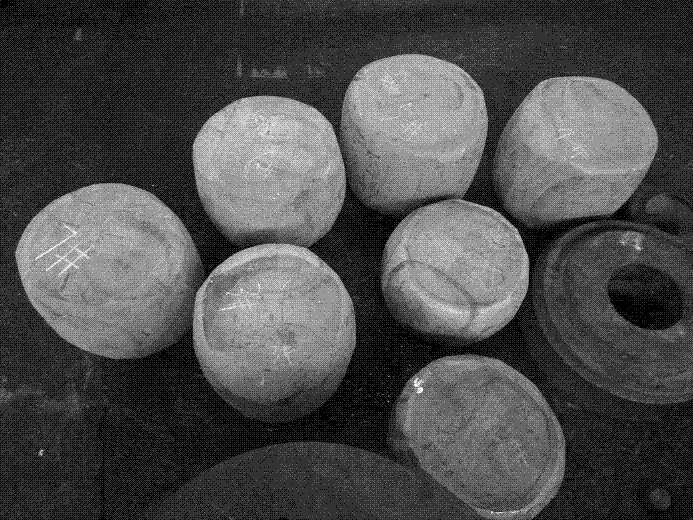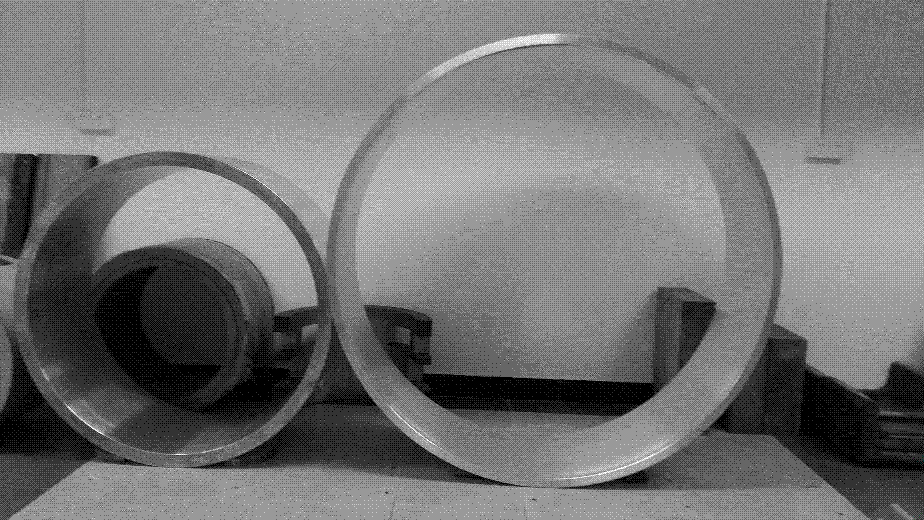Forging and rolling integrated manufacturing process of large-diameter ultrahigh-strength high temperature resisting magnesium alloy shell part
A preparation process and ultra-high-strength technology, which is applied in the deformation of magnesium alloys, forging deformation and ring rolling deformation of Mg-Gd-Y-Zr rare earth magnesium alloys, and can solve the problems of difficult preparation of magnesium alloy shell parts and limitation of continuous deformation, etc. problem, to achieve the effect of uniform deformation and small anisotropy
- Summary
- Abstract
- Description
- Claims
- Application Information
AI Technical Summary
Problems solved by technology
Method used
Image
Examples
Embodiment 1
[0025]First, use semi-continuous electromagnetic casting to prepare an ingot with a diameter of φ400mm and a length of 2500mm. The composition is Mg-9.20Gd-2.90Y-0.20Ag-0.05Er-0.39Zr (wt.%). , Machining an ingot with a diameter of φ380mm and a length of 800mm, and holding it at 520°C for 15h for homogenization annealing. The ingot is forged and billeted. Before forging, the ingot is kept at 490°C for 10 hours, the upper and lower flat anvils are heated to 350°C, and the ingot is forged and deformed at a slow speed of 10mm / s in multiple passes on a vertical hydraulic press. The specific process is as follows: The height direction of the cylindrical blank and the two radial directions perpendicular to each other are the Z, Y and X directions respectively; firstly, 6 passes of upsetting are carried out along the Z, Y and X directions, and the deformation amount of each pass is 30%, and the cylindrical Press the billet into a hexahedron; then use Y or X as the axis, roll and compr...
Embodiment 2
[0027] First, use semi-continuous electromagnetic casting to prepare ingots with a diameter of φ450mm, a length of 2500mm, and a composition of Mg-8.92Gd-2.23Y-0.28Ag-0.12Er-0.36Zr (wt.%), such as figure 1 As shown, stress relief annealing at 200°C for 16h, machining an ingot with a diameter of φ420mm and a length of 1075mm, and homogenizing annealing at 490°C for 20h. The ingot is forged and billeted. Before forging, the ingot is kept at 520°C for 10 hours, the upper and lower flat anvils are heated to 325°C, and the slow-speed multi-pass forging deformation is performed on a vertical hydraulic press at a rate of 6mm / s. The specific process is as follows: The height direction of the billet and the two radial directions perpendicular to each other are Z, Y and X directions respectively; firstly, three passes of upsetting are carried out along the Z, Y and X directions, and the deformation amount of each pass is 40%, and the cylindrical billet is pressed into Hexahedron; then t...
Embodiment 3
[0029] First, use semi-continuous electromagnetic casting to prepare ingots with a diameter of φ450mm and a length of 2500mm, and the composition is Mg-8.71Gd-2.64Y-0.25Ag-0.12Er-0.35Zr (wt.%), heat preservation at 250°C for 14h for stress relief annealing, and machining An ingot with a diameter of φ420mm and a length of 1075mm was produced, and was homogenized and annealed at 500°C for 15h. The ingot is forged and billeted. Before forging, the ingot is kept at 510°C for 12 hours, the upper and lower flat anvils are heated to 300°C, and then a slow multi-directional forging of 8 mm / s is performed on a vertical hydraulic press. The specific process is as follows: The height direction of the billet and the two radial directions perpendicular to each other are Z, Y and X directions respectively; firstly, four passes of upsetting are carried out along the Z, Y and X directions, and the deformation amount of each pass is 35%, and the cylindrical billet is pressed Form a hexahedron;...
PUM
 Login to View More
Login to View More Abstract
Description
Claims
Application Information
 Login to View More
Login to View More - R&D
- Intellectual Property
- Life Sciences
- Materials
- Tech Scout
- Unparalleled Data Quality
- Higher Quality Content
- 60% Fewer Hallucinations
Browse by: Latest US Patents, China's latest patents, Technical Efficacy Thesaurus, Application Domain, Technology Topic, Popular Technical Reports.
© 2025 PatSnap. All rights reserved.Legal|Privacy policy|Modern Slavery Act Transparency Statement|Sitemap|About US| Contact US: help@patsnap.com



